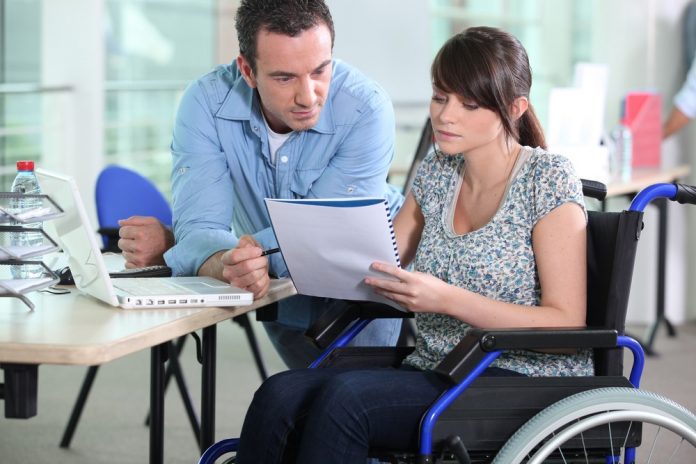Developing an accessible workplace is imperative to help expand workplace diversity, and ultimately improve the recruitment, hire and retention of employees with disabilities. While many businesses associate the transformation of their workplace into an accessible one as costly, this is not always the case and there are numerous things that businesses can implement without any additional costs. Understanding what people with disabilities need in the workplace is the first step to ensuring that your workplace is all-encompassing, and here, we’re taking a closer look at how to make the workplace more accessible for your employees, and why it is important.
Entry Points & Exits
A key area where the workplace should be accessible is the building entry points and exits. Ensuring that your building is fully accessible and user-friendly for visitors with disabilities is extremely important for your business, and this can relate to both employees and external visitors. Having entrances which are step-free, an alternative to a revolving door, or have an automatic opening feature on your entry and exit points are all ways to ensure that visitors with disabilities are able to enter and exit the building in a hassle-free manner. In some cases, employees and visitors may require the use of portable mobility scooters within the building, so ensuring that your corridors are obstruction-free, or have easily-navigable alternative routes designed for visitors with disabilities is also important.
Car Park
One of the key areas which many businesses tend to dispel as being in need of renovations in order to help encompass the needs of an employee with a disability is the car park. It is recommended that where car parking provision is in excess of 50 spaces, around 4% should be reserved for those with disabilities. This will not only help to accommodate your employees, but it can also help to ensure that any visitors to your business also have reasonable parking. If considering offering parking to your staff take a look at YourParkingSpace, a marketplace which offers both car parks and private parking spaces.
It is also recommended that parking bays should be a minimum of 3.3 metres wide, in order to allow for Motability wav parking and also to help allow for the transfer from the car to a wheelchair. It is also important to clearly signpost the designated spaces. You may even consider implementing a pathway system, or adapting the current pathways to be suitable for those using wheelchairs and those with visual impairments.
Other Reasonable Adjustments
When it comes to improving accessibility in the workplace, there are a number of other reasonable adjustments that as an employer, you should take into consideration. This can help to ensure that workers are not substantially disadvantaged, and these adjustments can apply to full-time employees, business partners and even interns and apprentices. These reasonable adjustments are also not solely related to those with physical disabilities, but also encompass those with mental health conditions. Some examples of reasonable adjustments include changing the recruitment process in order to ensure that candidates with certain disabilities are able to be considered for an available role, changing equipment or providing accessories for those with arthritis, introducing a phased return to work process for those who have recently attained a disability whilst in employment, and many more.
Making the workplace accessible is important for businesses of all sizes. Not all adjustments have to be as costly as installing an entire new pavement system in the car park, and can relate to simple small adjustments which make the entire employment process much more encompassing to all individuals working in the company, or visiting the building.
Find a Home-Based Business to Start-Up >>> Hundreds of Business Listings.

















































